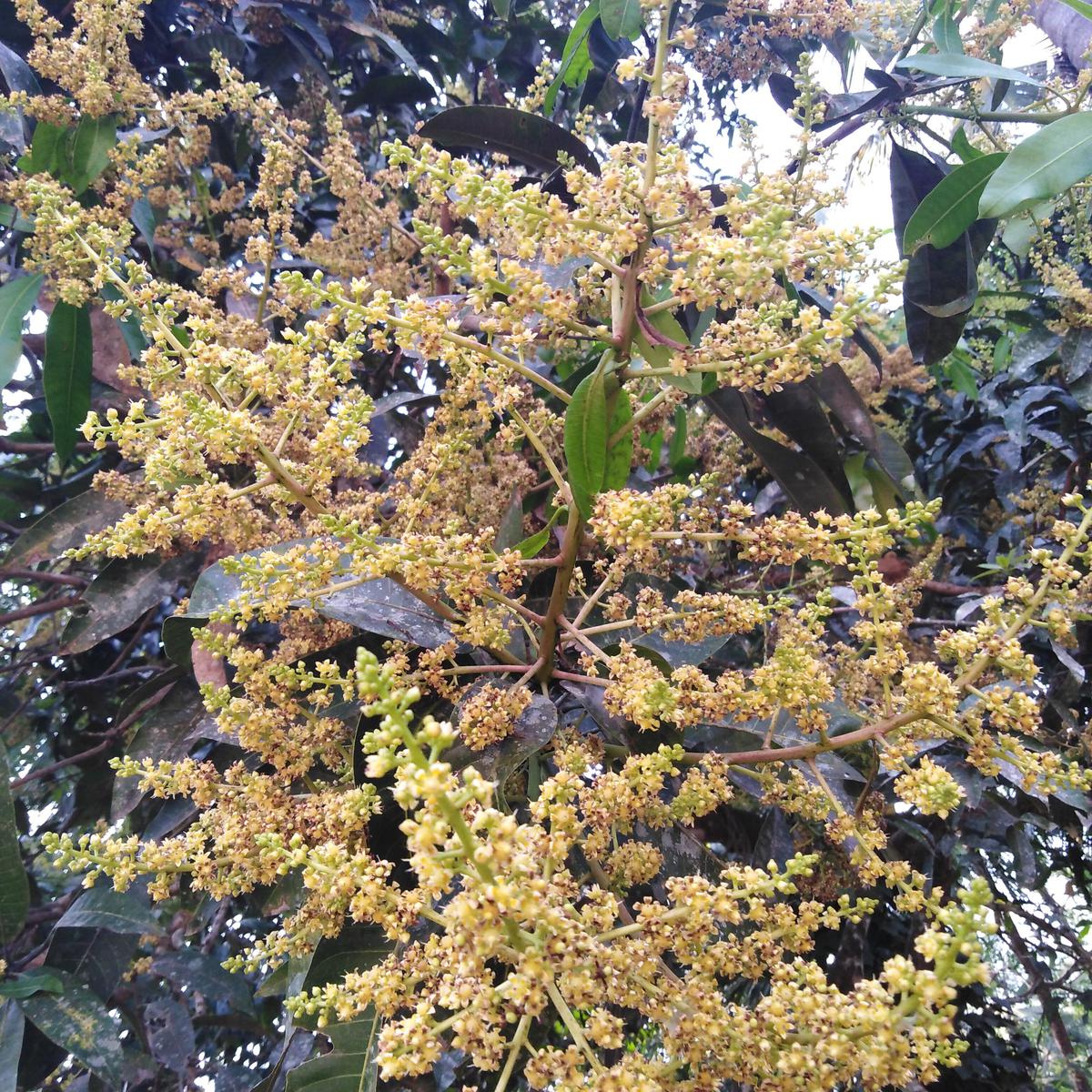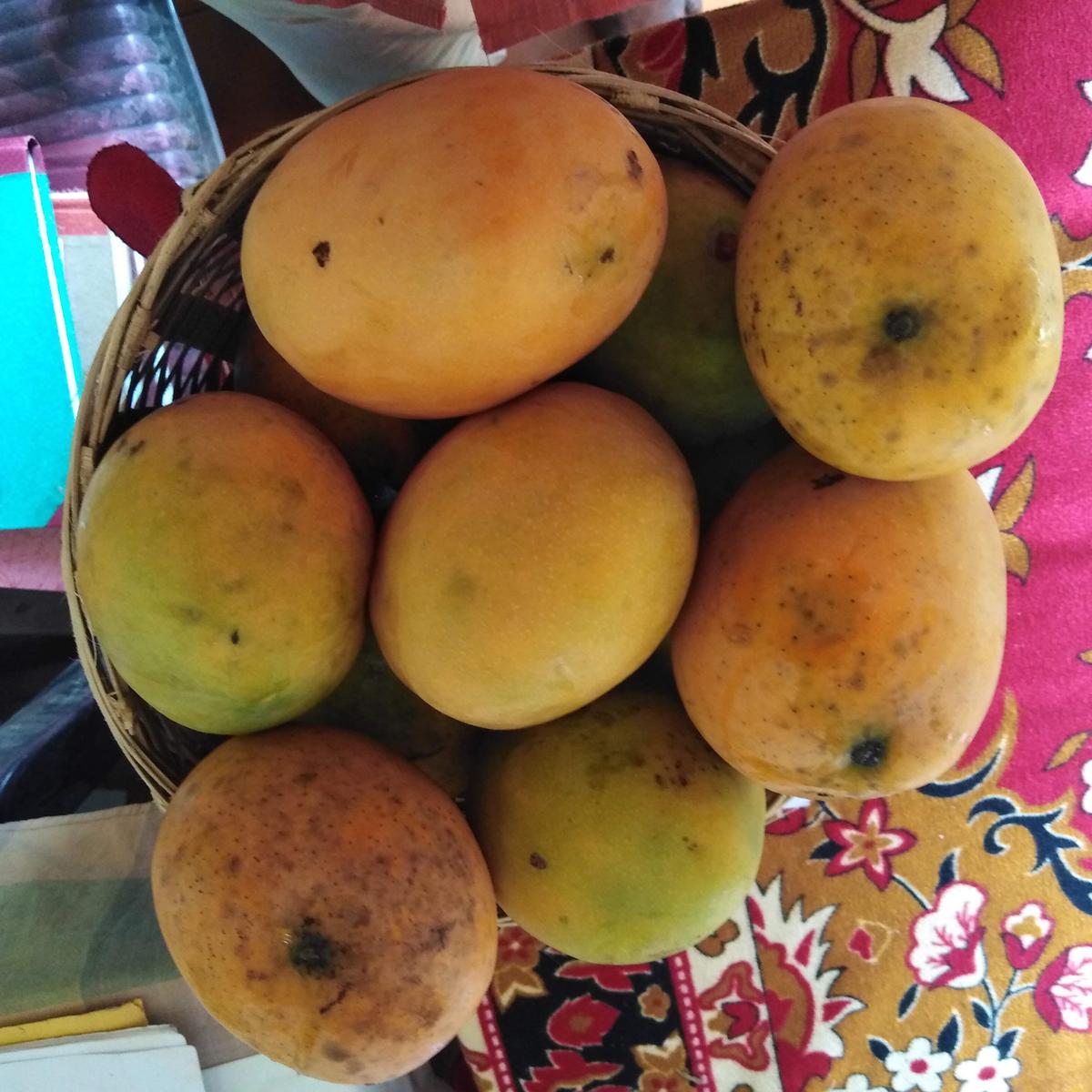The first native mango from Kerala to get a GI tag is inspiring farmers and researchers to save more indigenous varieties of the fruit
The first native mango from Kerala to get a GI tag is inspiring farmers and researchers to save more indigenous varieties of the fruit
To save a mango, you can make squash, jam and juice. Prabhakaran VO, a retired agricultural officer and Kuttiattoor mango enthusiast, says they have launched two new products with the fruit: raw mango powder and sun-dried mango juice (locally known as thera).
In September 2021, the Kuttiattoor mango which grows in abundance mainly in Kuttiattoor, a small village in Kannur district, became the first mango from Kerala to get a GI tag. This mango, also known as ‘Nambiar maanga’, ‘Kannapuram maanga’, ‘Kunjimangalam manga’ and ‘Vadakkumbhagam manga,’ is one of the State’s many delicious indigenous varieties.
To protect the mango cultivar and help farmers, the Kuttiattoor Mango Producer Company was formed on August 18, 2016, with Prabhakaran as chairman, and with the panchayat president, residents and agricultural officers as board members. With the support of the Agriculture Department, the company is providing saplings and grafts of the plant to propagate it.
“Kerala used to have nearly 100 varieties of native mangoes. Rapid urbanisation has seen many of those disappear. Efforts are now being made to popularise and propagate these regional avatars of the fruit by voluntary bodies, agriculture scientists and mango enthusiasts,” says CR Elsy, former head of the Intellectual Property Right Cell of Kerala Agricultural University.
Oral history has it that some three hundred years ago, mango saplings were brought to two aristocratic households in Kuttiattoor. The trees flourished in the rich soil of the area. Birds and animals spread the seed and trees grew abundantly in several houses.
Prabhakaran, who worked in the area as agriculture officer, says that the local mango was taken for granted as it was common in the village. The fruit, a deep fiery orange when it ripens, was mainly sold in the Irikkur market, about 11 kilometres from the village. Adds Prabhakaran: “Farmers noticed that there was a great demand for the large fibrous fruit. The skin of the ripe mango has no black spots; it is a uniform golden yellow colour. Instead of the several names it was known by, we decided to call it after our village, Kuttiattoor.”
In 2016, efforts were taken to procure a GI status for this mango. Elsy joined hands with farmers in Kuttiattoor on this mission. The speciality of the mango is that its saplings and grafts grow into trees that yield fruits with the same texture and taste of the parent plant, which is not the case with all mangoes.

Blossoms of the Kuttiattoor mango
| Photo Credit: SPECIAL ARRANGEMENT
One of the advantages of the fibrous fruit is that the annual crop from one tree could be around two tonnes. Prabhakaran points out that a household could earn ₹20,000 to ₹40,000 from one or two trees.
However, since it was not farmed or grown commercially, many of the trees were cut for the wood. “A 75-year-old tree was cut down while our work for GI tagging was going on,” says Elsy.
Prabhakaran A, a resident of the village, says that there were at least 12 trees that were more than 100 years old in the village. “One in Chathoth house, perhaps the oldest, was cut down. Now, there are just two or three. One is in my ancestral home. Even this year, it yielded about 400 kilograms of fruit!”
He says there is hardly a child in the village who has not savoured the raw mango with salt. But it is mostly the ripe fruit that is treasured by the residents. “Used as an ingredient for a chutney or to add a tangy note to a spicy fish curry, there is nothing to beat this mango.”
Prasanna K, a worker in the mango company, uses the raw and ripe fruit to cook curries and chutneys. Recently she cut the raw mango in tiny pieces, mixed it with salt and sun dried it to be send to her daughter in West Asia.

Efforts are being taken to make value-added products from the mango
| Photo Credit: Special arrangement
Dr S Simi, head of the Department of Fruit Science at the College of Agriculture in Vellayani, Thiruvananthapuram, is leading a project to procure, store and save native species of the mango by creating a field gene bank and planting seeds of regional varieties to preserve them.”
Named by the land
Several wild mangoes are known by the region they grow in, their predominant flavour, or the shape of the fruit.
Native varieties includes the Karppooram, Kappa, Kasthuri, Cheriya Kilichundan, Valiya Muthalamoopan, Panchara varikka, Kalkkanda vellari, Kuntharikam manga.
Simi did her doctoral thesis on Kerala’s native mangoes and says that quite a few have been lost in the five to 10 years. “Since native mangoes are cut down frequently, it is difficult to estimate how many have been lost forever. For instance, we have not got a single fruit of the Kuntharikam manga. To document the different kinds of mangoes, we depend on senior citizens who recall the varieties they had eaten in their childhood and youth. We are trying to protect what remains now,” she points out.
Elsy says the mango cultivars such as the Chandrakaran, Moovandan and Kottoorkonam are just some of the varieties that can work towards procuring a GI tag.
Ever since the Kuttiattoor mango got a GI tag, Prabhakaran feels residents have understood the value of the mango. Orders are pouring in from nearby cities and districts in Kerala. Relishing the delicious ripe fruit, he avers that this variety may eventually become THE mango of Kerala.
























